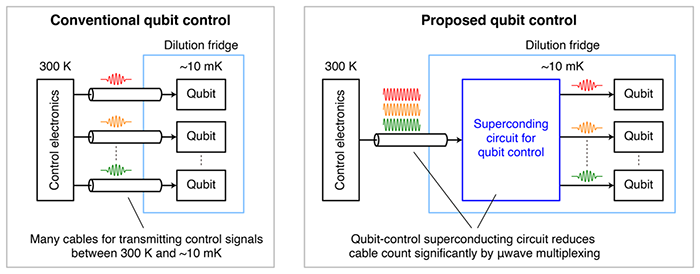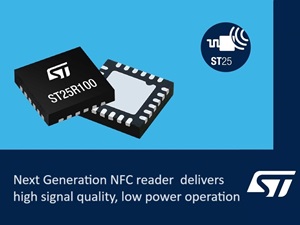
- Density of qubit-controlling-signals per cable may increase by approximately 1,000 times
- The size of conventional transmission paths for qubit-controlling-signals limits the number of controllable qubits
- A superconducting circuit that can control multiple qubits via a single cable has been proposed and demonstrated, whereas conventional technology requires each qubit to be controlled via a separate cable
- Development of large-scale quantum computers to be accelerated by the proposed circuit

In support of the development of large-scale superconducting quantum computers, researchers with the National Institute of Advanced Industrial Science and Technology (AIST), one of the largest public research organizations in Japan, in collaboration with Yokohama National University, Tohoku University, and NEC Corporation, proposed and successfully demonstrated a superconducting circuit that can control many qubits at low temperature.
To realize a practical quantum computer, it is necessary to control the state of a huge number of qubits (as many as one million) operating at low temperature. In conventional quantum computers, microwave signals for controlling qubits are generated at room temperature and are individually transmitted to qubits at low temperature via different cables. This results in numerous cables between room and low temperature and limits the number of controllable qubits to approximately 1,000.
In this study, a superconducting circuit that can control multiple qubits via a single cable using microwave multiplexing was successfully demonstrated in proof-of-concept experiments at 4.2 K in liquid helium. This circuit has the potential of increasing the density of microwave signals per cable by approximately 1,000 times, thereby increasing the number of controllable qubits significantly and contributing to the development of large-scale quantum computers.
The above results will be published in “npj Quantum Information” on June 3 at 10 a.m. London time.


















